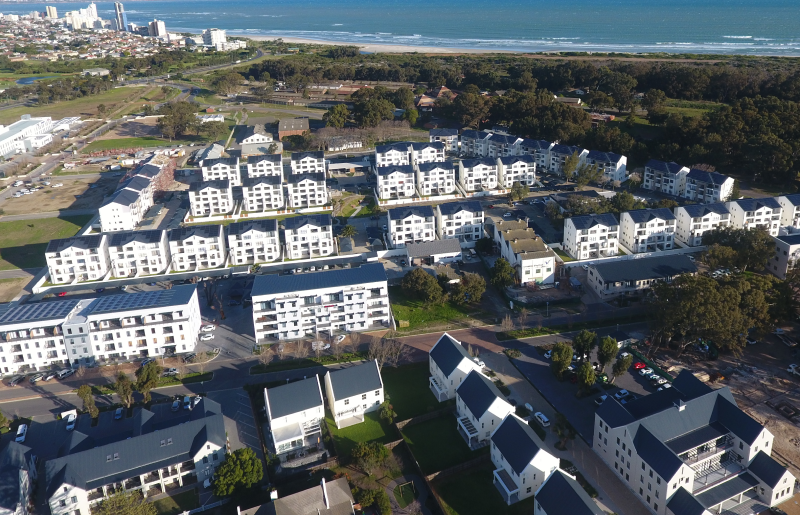If you live in South African suburbia, there’s a noticeable change taking place in the urban landscape – one that will have a lasting impact on the way we use electricity in near future.
The driving force behind the surge of solar
If you look closely at your regional shopping centre’s roof, or just as likely your neighbors, it’s becoming more and more likely it’s been put to a new and more productive use. Covered in solar photovoltaic panels, these roofs, distributed around our cities, are now producing electricity. why now? And is it time you join this cleaner energy revolution?
We live in a country where electricity prices have risen by as much as 390% in total since 2008. This is a big number. Over the last few years, we’ve also introduced the phenomenon of ‘load shedding’. Given all this, it’s no surprise that many have looked for alternatives and solar is turning out to be a popular one.
For the first time in the history of electricity itself, there are affordable alternatives to the little loved electric utility (In layman’s terms, Eskom or your municipality). What we are talking about is distributed energy generation. The phenomenon where individual consumers can generate their own electricity (sounds so simple, could we not have thought of this years ago?). In South Africa, we also like to call it embedded generation.
If you have the capital, it’s possible to produce your own electricity cheaper than your municipality can deliver it to your plug at home. This statement should not be understated. It has huge implications for where the future of energy generation is going. It means you and I finally have competitive options. With competition there’s bound to be one winner and that’s the consumer.
But why buy the cow, when you just want cheaper milk?
Embedded generation is a trendy topic that many argue is the way of the future. In the US and Europe, homeowners have been installing solar for many years now but what’s interesting, is that these panels are often not owned by the homeowners, but provided under various types of agreements, most popular of which are referred to as a power purchase agreement (or PPA’s).
To sum up what the difference is, you could compare it to either buying a cow and getting the milk for free (this would be someone that pays for a solar installation and gets the energy thereafter for free) or alternatively, they might just be looking for cheap milk. In this case, all the customer does is pay for the energy that is used and let someone else worry about owning and managing the cow.
You can probably guess that the majority of the market is really just after cheap milk, and many companies offer just that – taking care of the cow for you.
So where’s South Africa in all this?
Residential consumers have to date not had much to get excited about. The residential sectional title market has over 1.9 million homes. These are usually tightly knit mini-communities and it makes sense to consider energy (solar) solutions as there are a number of consumers who can benefit from one system.
As in the US, a growing trend is for these complexes to consider just solar energy, offered by one of a few new clean energy providers targeting sectional titles in particular.
SolarAfrica is one such provider, targeting residential sectional title schemes, with a clean energy alternative to grid power.
With the right space, complexes could save as much as 5-25% of their energy costs, compared to grid tariffs. “Every way you look at it, the business case is clear”, says SolarAfrica Commercial Director Johan Pienaar.
What should sectional titles ( or the body corporates that run them) be looking when considering solar?
1. Finding the Funds
It’s the biggest hurdle to anyone wanting to own a solar system. As a simple rule of thumb installing a solar system will cost around 8-10 times the typical electricity bill you anticipate replacing. This has simply put solar ‘out of reach’ for many people.
2. Space & Size
If your sectional title is larger than 50 homes, there are significant advantages for a body corporate to consider solar. If you opt for just solar energy, as long as the costs are less than the cost of energy sourced from the municipality, savings are achieved from day one and go directly to the Body Corporate. Flat areas or north facing roofs will all help to make the system more viable.
3. Make Sure the Cow is fully managed
If the complex chooses a solar energy solution, it should make sure the ‘cow’ is fully managed. The complex should only have to pay for the clean energy used. The provider should do the rest.
4. New Technology
As solar takes off, we can expect an influx of innovation over the next few years. Future energy storage options, such as batteries, are already decreasing in price and in the very near future will become affordable extensions to your complex’s existing system.
Select a service provider that has experience in alternative technologies as well, or can show how these advancements could be incorporated into the development in future.
Solar energy is proving to be a smart choice. Managing agents and property developers are in an excellent position to provide objective advice on the alternatives of ownership or just energy. Make sure you do your homework. At the end of the day, no one likes to get milked!
Planning your organisation’s green energy road map is easier than it seems. Fill in our green energy goals questionnaire to identify the right alternative energy solution for your business.



